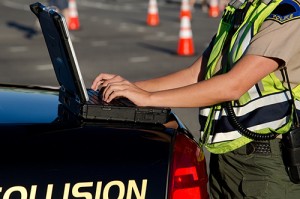 In the 2002 futuristic movie “Minority Report,” Tom Cruise heads up a police division called PreCrime. This unit uses predictive analysis collected from mutants to arrest the would-be criminal before the crime is committed. The movie is set in 2054 and while I don’t think we have crime fighting mutants among us, we do have computers that make predictive analysis in police work a reality in 2017.
In the 2002 futuristic movie “Minority Report,” Tom Cruise heads up a police division called PreCrime. This unit uses predictive analysis collected from mutants to arrest the would-be criminal before the crime is committed. The movie is set in 2054 and while I don’t think we have crime fighting mutants among us, we do have computers that make predictive analysis in police work a reality in 2017.
Predictive Analysis
Predictive analysis uses data mining, statistics, computer modeling, and machine learning to predict future events. This can help companies or agencies to better position a product launch or develop a business continuity plan. It can also help them forecast demand for products or services. Retail stores have used this science for years to plan for resources based on a number of factors such as the day of the week, day of the year, weather, and other data points. Dunkin’ Donuts, for example, uses same day sales for the last year as a factor in deciding how many donuts to start on any given day. This helps to reduce waste from too much product and ensures that a customer can always get a French cruller at the end of a busy day.
PredPol
This same predictive analysis is being applied to crime prevention. Predpol is an advanced analytics application that police agencies in California, Maryland, Florida, Georgia, Washington and elsewhere are using. The software collects three historical data points: past type of crime, place of crime, and time of crime.
Through historical analysis, Predpol developers have discovered that there is a pattern to crime and criminals and by mining for those three data points the application can predict where crime is likely to occur in the future. There is no personally identifiable information collected or used so as to prevent biases or profiling. Once the predictive analysis is complete, police assign extra patrols to discourage crime where it is expected. Police report this application does indeed help reduce crime in their jurisdictions. This is a case of advanced analytics being used for positive results in communities.
Counterpoint
To be fair, the output is only as good as the data entered. Information analysts often refer to this as “garbage in, garbage out.” Software such as Predpol and other applications rely on clean, accurate data to predict future hotspots. In a recent blog post from the Council On Foreign Relations, the authors argue that not all crimes are reported so these tools are limited because they start with an incomplete data set, which results in inaccurate or limited information about future crimes. Police go back to the areas where crimes were reported but miss other obvious opportunities because they lack a full data picture. It is important to factor in other data points in order to understand the full picture.
Thoughts
There will most likely be some pushback from people concerned about profiling of a particular neighborhood or audience, but with reasonably clean and unbiased data collection tools such as these can aid law enforcement agencies in fighting crime and creating safer communities.
Do you have other examples of data analytics that is helping to solve real world problems? Let me know your thoughts.
Kelly Brown is an IT professional and assistant professor of practice for the UO Applied Information Management Master’s Degree Program. He writes about IT and business topics that keep him up at night.


